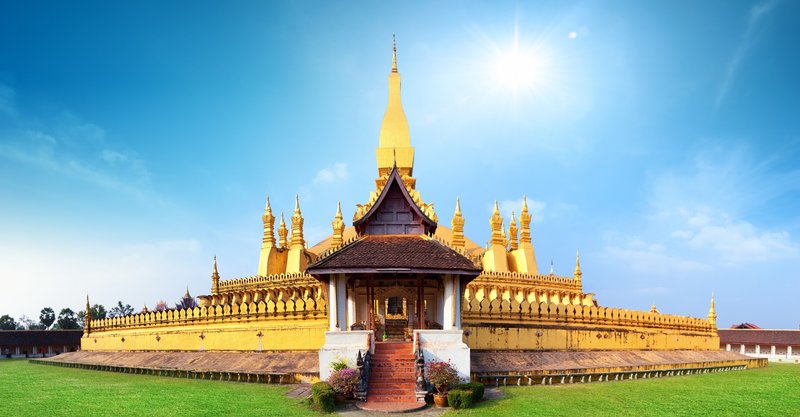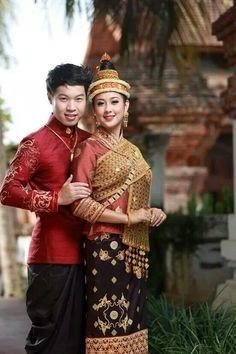
LAO CULTURE:
Lao culture is conservative and easygoing. Also family and friends are really important.
THE LAO CALENDAR:
In Lao there are many people that are Buddhists. However Laos has two calendars: the Gregorian calendar used for business and the lunar calendar used for holidays and festivals. Pi Mai, or Lao New Year in the fourth lunar month of 2018 marked the beginning of 2561 in the Buddhist calendar. The Boun Bung Fai rocket festival is in the fifth lunar month. Boun Khao Phansa, at the start of the three-month long Buddhist Lent is in the seventh lunar month. Bout That Luang is in the 12th lunar month.
MUAN BAW: ARE YOU HAPPY?:
Lao culture focuses on the pleasures of life: eating, drinking, sleeping and talking to friends. Work is not such a big priority. It’s common to be asked if meals, weekend activities, weddings and what you’re doing right now is “muan,” or enjoyable. When asked, always answer in the affirmative, regardless of what you really think. The Lao avoid stress, do enough to be ok and put a good laugh with friends first or talking with family before work and money.
WEDDINGS:
Weddings are “the more the better” type events and it’s not unusual to go to your neighbor’s niece’s wedding or your co-worker’s cousin’s wedding having never met the people before. A baci ceremony is followed by a family-style sit-down lunch or dinner and lots of Lao dancing, some talks and photos. Beer with ice and Lao whisky will be given and guests come and go as they want.

CLOTHES:
The typical dress there is called “sinh”. Schoolgirls wear navy or black sinhs, government employees wear khaki sinhs and matching tops every Monday, and all women will wear sinhs to weddings or temple ceremonies. Decorations and patterns will be different from place to place and they also change in connection to the ethnicity of the people, but the shape will be the same for everyone.

BUDDHIST TEACHINGS:
Buddha said not to take life, steal, commit adultery, lie, and take intoxicants. Laos has a very low theft rate and Lao people are some of the most honest and trustworthy when it comes to others’ money and property. Divorces don’t happen a lot, but it’s not uncommon for a husband to take a “mia noy” meaning “little wife” or mistress. Some non-Buddhist ethnic minorities practice polygamy, which means that they will have more than one wife, and many Buddhists drink a lot of Beer Lao, not really following the intoxicants rule.
SHOWING AFFECTION IN PUBLIC:
Public displays of affection are culturally not appropriate at any time, even holding hands or a kiss on the cheek can make locals uncomfortable, so is better not to do it.
SUU LIN:
Lao people are given a multi-syllabic first name when they’re born, but they often go by their one-syllable Suu Lin, or “play name.” Lao people sometimes have different nicknames in different social circles and it's not uncommon to never learn your friends’ full names. Nicknames are given to babies to keep away evil spirits and are often not nice, with translations like “fat,” “wide,” “small,” or “eye.”
STOP, LOOK, LISTEN:
Lao drivers are not always good, so accidents will happen a lot, drunk driving is also a problem and motorbike drivers can be seen driving the wrong way on a one-way street, on the sidewalk, into a building or through the market. Be careful about where you go and don’t think that if drivers see you they will stop or slow down. Look both ways and don’t think that just because you have the green light, someone else won’t run a red light.
FOOD:
In Laos, food is the most important activity of the day. In the local language, it is quite common for people to say hi to each other by asking, “Have you eaten food?”, “Kin khao laeo bor?”. Food is also the topic of many conversations most of the time, especially when eating and sharing dishes between friends and family. The most famous food in Lao is:
STICKY RICE:
It is said that Lao citizens eat more sticky rice than anyone else in the world. It is traditionally steamed in a cone-shaped bamboo basket, and put in a basket where it is eaten with many other dishes.
GREEN PAPAYA SALAD: TAM MAK HOONG:
Green Papaya Salad is made with pieces of not mature papaya. It is of Lao origin, but different versions will be served all around the region. Green Papaya Salad was a dish imported to Bangkok from Lao immigrants. It is similar to Thailand’s Som Tam dish, but does not have peanuts and is usually made with fish sauce. Other ingredients are palm sugar, lime, garlic, tomatoes, dried shrimp, chilis, and eggplant. All of these ingredients are pounded together in a traditional mortar and pestle.
STEAMED FISH: MOK PA:
Mok Pa is steamed fish that is wrapped up in banana leaves and put together with bamboo strings. It is prepared with lemongrass, kaffir leaves, green onions, fish sauce, green chilis, shrimp paste, and fresh dill. All these ingredients are mixed together with steamed fish. Mok Pa should never be served dry, and is also another dish that is eaten with sticky rice.
WET NOODLES: KHAO PIAK SEN:
Khao Piak Sen is a noodle soup similar to Udon, but it is made with rice. It is made with pork or chicken, lemongrass, galangal, shallots, garlic, chopped coriander leaves, bean sprouts, and served with sliced limes. The most important thing is the broth, that should be slowly cooked with bones for the best flavor. It is also possible to put sugar, chili sauce, dried chili powder, fish sauce, or soy sauce.

